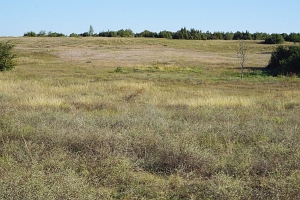
 E
E +22Kontinente:EUNAMA
+22Kontinente:EUNAMA1. Falter
5. Diagnose
5.1. Geschlecht nicht bestimmt
5.2. Erstbeschreibung
6. Biologie
6.1. Habitat
6.2. Nahrung der Raupe
- [Asteraceae:] Ambrosia artemisiifolia (Beifußblättrige Ambrosie)
Die Raupen dieser Art leben nahezu monophag an der aus Nordamerika eingeschleppten Beifußblättrigen Ambrosie; da der Falter einheimisch ist, muss er natürlich auch noch mindestens eine andere Nahrungspflanze haben.
7. Weitere Informationen
7.1. Andere Kombinationen
- Tarache candefacta Hübner, [1831] [Originalkombination]
7.2. Synonyme
- Micra haworthana Westwood, 1851
- Acontia debilis Walker, [1858]
- Acontia neomexicana Smith, 1900
- Tarachidia candefactella Strand, 1916
7.3. Faunistik
Trotz vieler negativer Erfahrungen mit ausgesetzten Arten wurde die ursprünglich nordamerikanische Art (locus typicus: Pennsylvania) in den 1960er Jahren um Krasnodar in Südrussland eingeführt, um die ebenfalls aus Nordamerika eingeschleppte Ambrosie (Ambrosia artemisiifolia) zu bekämpfen. Die Ansiedlung des Falters verlief erfolgreich, und die Art breitet sich jetzt in alle Richtungen aus. Die Verbreitung reichte um 2008 von der Ukraine und dem SE-europäischen Russland bis Swerdlowsk im Ural und dem Kaukasus; die jüngsten Meldungen betrafen dabei die Schwarzmeerküste in Bulgarien und Rumänien (Quelle: Fibiger et al. 2009). Székely (2012) meldet aus Rumänien: "Histria, 25.VIII.2008 (1 ♂), 20.VII.2009 (1 ♂), 15.VIII.2010 (1 ♂), 27.VIII.2011 (1 ♂), Babadag, 19.VII.2009 (1 ♂), Plopu, 25-29. VIII.2011 (3 specs) (Székely, Dincă & Juhász, 2011) (Plate 2: 16)."
Bald darauf folgten die ersten Nachweise aus Serbien (2009) und Ungarn (2012). Die weitere Ausbreitung der Art in Serbien und darüber hinaus wurde von Stojanović et al. (2017) dokumentiert und modelliert. Gerade entlang der Donau dürften Nachweise in Österreich und eventuell auch Bayern möglich werden.
Das, was unter dem Stichwort "Klimaerwärmung" zusammengefasst wird, fördert die Ausbreitung der Ambrosie und damit auch des an sie gebundenen Falters. Das jedenfalls ist die Schlussfolgerung, die Stojanović et al. (2017) ziehen: "After entering the Balkans, the moth continued to spread westward following the course of the Danube river, but also southward along the coast of the Black Sea (Balgarevo, Kaliakra, Bulgaria; Székely et al., 2011). According to the newest data (Stojanović et al., 2011; Szeõke, 2012), the range of the mentioned species now reaches Central Europe, having expanded along the course of the Danube through Serbia. It was reported for the first time in Serbia on 10 August 2009 (Stojanović et al., 2011). The northernmost finding was registered in Mezõtúr (Hungary) on 17 September 2012 (Szeõke, 2012). Until now it was not possible to determine the paths of its migration, dynamics of its spreading or abundance of ist populations. The finding of A. candefacta in the Ðerdap National Park (eastern Serbia) on 10 August 2009 (at the Kurmatura - Šomrda site) (Stojanović et al., 2011) at a distance of about 1,200 km northwest of the site of its introduction into Europe more than 40 years ago suggests that recent climate changes might be mostly responsible for further spreading of the species in Europe in certain habitat types, since expansion of the range of the host plant, A. artemisiifolia, in Europe is promoted by climate change (Mazzi and Dorn, 2012; Cunze et al., 2013). If this be the case, it might be expected that the area of distribution of A. candefacta in Europe could expand similarly, due to climate changes, following the host plant’s spread. If climate change in Europe continues, further radiation of both the host plant and the moth might be expected in the future. This is supported by Poltavsky and Artokhin (2006) and Essl et al. (2015), who stated that the moth initially suffered from the harsh continental climate in the region where it was introduced, but that a series of mild winters between 2002 and 2005 has since promoted the build-up of large populations. Other factors might have partially played a role in the moth’s recent expansion since temperatures started to increase in the late 1970s (Dai et al., 2011)."
(Autor: Erwin Rennwald)
Nachtrag am 24. und 27.09.2021: Erwin Rennwalds Prognose zu Österreich hat sich erfüllt, es liegen Nachweise via Lepiforum vor:
Österreich, Burgenland, Winden am See, 220 m, 12.07.2021 (Foto: Herbert Hofmann), det. Vasiliy Sergienko und Tina Schulz [Forumsbeitrag 27. August 2021].
Österreich, Steiermark, Allerheiligen bei Wildon, nachts an der Hausmauer, 350m, 21. August 2021, Nachtfund (Foto: Sabine Gasparitz), det. Sabine Gasparitz, conf. Daniel Bartsch [Forumsbeitrag 26. September 2021].
Österreich, Niederösterreich, Neulengbach, 250 m, im Ortsgebiet, 12.09.2021, 09:07 (Foto: Udo Tschernuter), det. Sabine ..., conf. Dieter Fritsch [Forumsbeitrag 22. September 2021].
(Autor: Jürgen Rodeland)
7.4. Publikationsdatum der Erstbeschreibung
Nach Hemming (1937: 456) wurde der ditte Teil irgendwann zwischen dem 2. Juli 1827 und dem 31. Dezember 1831 publiziert. Den Regeln des ICZN folgend, ist das letztmögliche Datum anzunehmen.
(Autor Jürgen Rodeland)
7.5. Literatur
- Hemming, F. (1937): A bibliographical and systematic account of the entomological works of Jacob Hübner and of the supplements thereto by Carl Geyer Gottfried Franz von Frölich and Gottlieb August Wilhelm Herrich-Schäffer. Volume 1: i-xxxiv, 1-605. London (Royal Entomological Society of London).
- Erstbeschreibung: Hübner, J. („1825“) [1831]: Zuträge zur Sammlung exotischer Schmetterlinge bestehend in Bekanntmachung einzelner Geschlechter neuer oder seltener, nichteuropäischer Gattungen. Drittes Hundert. 1-48, figs. 1-1000. Augsburg (Verlag der Hübner'schen Werke bei C. Geyer).
- Pastorális, G., Kosorín, F., Tokár, Z., Richter, I., Šumpich, J., Liška, J., Laštůvka, A., Laštůvka, Z. & B. Endel (2018): Šestnásť druhov motýľov (Lepidoptera) nových pre faunu slovenska. — Entomofauna carpathica 30 (2): 1-24. [PDF auf ses.entomology.sk].
- Stojanović, D.V., Vajgand, D., Radović, D., Ćurčić, N. & S. Ćurčić (2017): Expansion of the range of the introduced moth Acontia candefacta in southeastern Europe. — Bulletin of Insectology 70 (1): 111-120. [PDF auf bulletinofinsectology.org]
- Székely, L. (2012): The Macrolepidoptera (Insecta) of Central Dobrogea (Romania). — Travaux du Muséum National d’Histoire Naturelle «Grigore Antipa», 55 (1): 125–166. DOI: 10.2478/v10191-012-0008-8 [PDF auf travaux.ro]














































